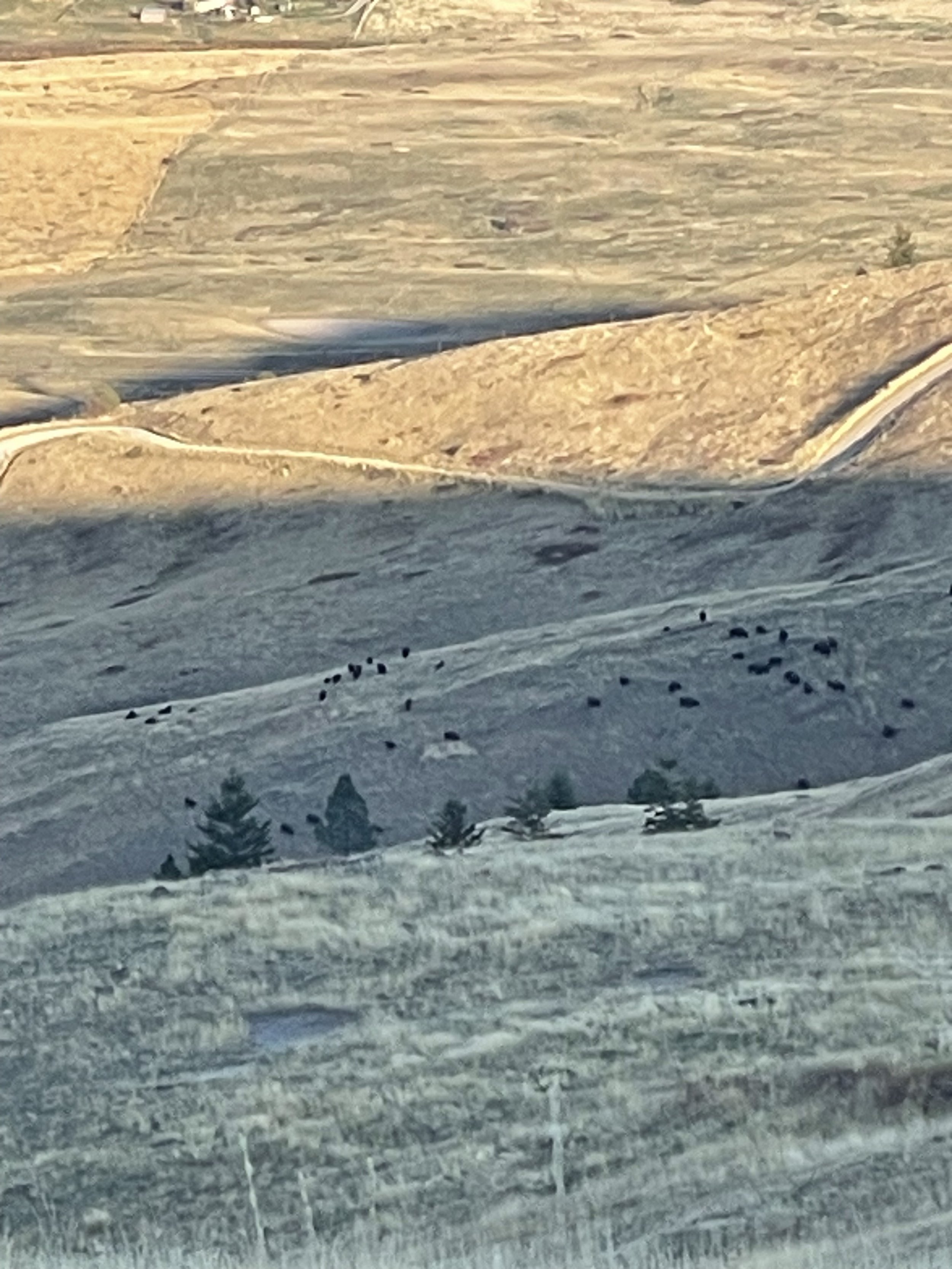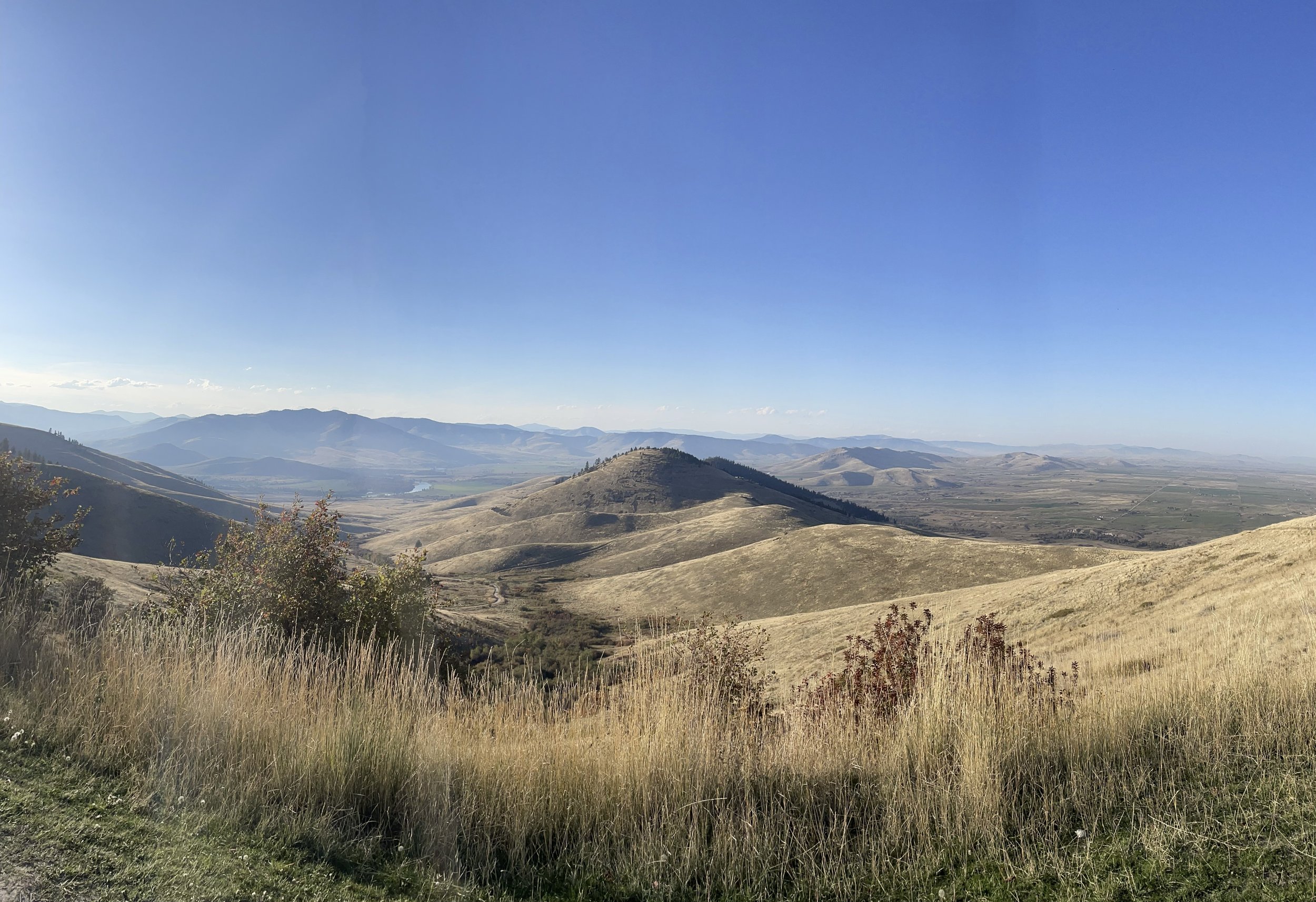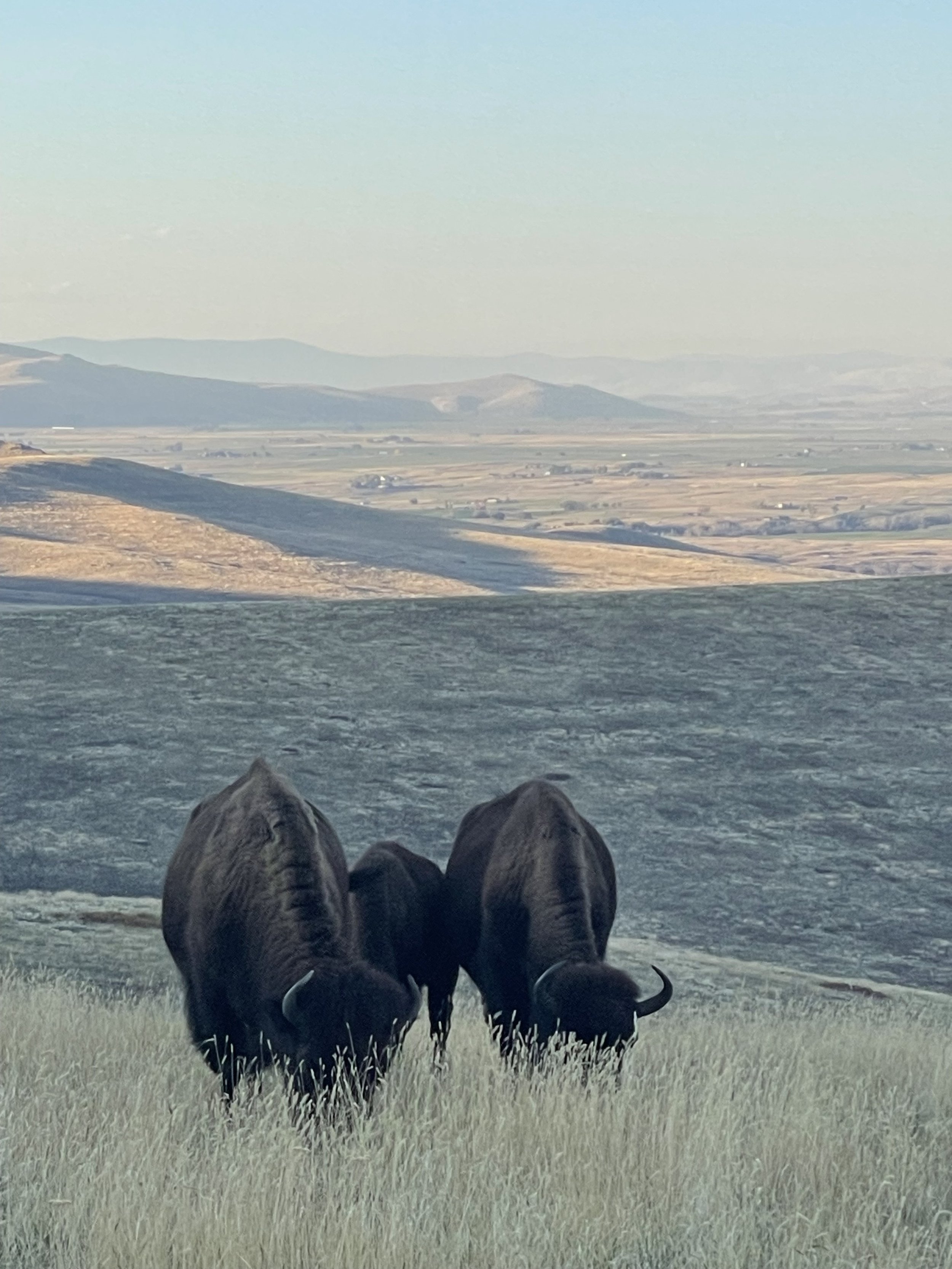Threshold on the Road
Executive Director Deneen Wiske on her recent visit to the Bison Range
I was in Missoula for Threshold last month, meeting with friends and supporters of the show—and found myself talking and thinking a lot about Season One. “The Bison Season,” as many refer to it, is the favorite among many Threshold listeners, especially those in Montana.
So when I found myself unexpectedly free on the afternoon of October 9, I knew exactly where I should go. I rolled down the windows of my rental car and headed north out of town on Highway 93.
An hour later, with Mission Mountains offering a stunning backdrop, I turned into the drive of the Bison Range.
In late 2020, US Congress and President Biden returned 18,766 acres of land, formerly the National Bison Range, to the Confederated Salish and Kootenai Tribes (CSKT). Now known simply as the Bison Range, the land is within the 1.25 million-acre Flathead Reservation in Montana.
The story of the Bison Range is part of Threshold’s origin story. Like many of Threshold’s listeners, I was introduced to the National Bison Range in Season 1, Episode 5, “Heirs to the Most Glorious Heritage.” Amy reported that episode—and all of Season One—long before the range was returned to the Tribes. Listening now and knowing what has transpired since is pretty powerful.
There weren’t any other cars in the parking lot of the visitor center, and I had a momentary fear that the range wasn’t open on Mondays. An unfounded fear, thankfully. The visitor center was an incredible resource, offering the full history of the range and a wide array of informational displays and artifacts. And the staff couldn’t have been more helpful. My phone battery was at 3%, and the administrator didn’t hesitate to offer her charger, telling me, “You’ll want to take pictures.” She was right.
After that, I was off, with no agenda other than to wind my way through 18,000 acres in the hope that I might catch a glimpse of one or a few of those magnificent beasts.
I started on the west loop, a little side road where the range staff said a few bison had been spotted earlier that day. I saw my first bison—not just that day, but in my life—almost immediately. He was a few hundred yards away, grazing and completely unbothered. I’m not sure how long I watched him, but at some point, I realized I had an entire range to explore, and I’d be stuck on the other side of the mountain after sundown if I didn’t move on.
A little farther along the west loop, I encountered a dozen or so pronghorns. It was so quiet I could hear bees buzzing.
Several miles into the drive, I glanced to my right and saw a hulking bison about 20 feet away. I stopped, and we sat staring at each other for several long and slightly uncomfortable but also amazing minutes.
There was another lone bison to my left, but much farther off, a tiny moving dot against the sunlit slope.
I meandered up through pines, fields of wildflowers, and mountain views that kept getting better than the one I thought was the best.
Wrapping around to the shadow side of the mountain, I caught a glimpse of what looked like a group of something. Rocks, maybe?
Nope.
Q̓ʷeyq̓͏ʷay. “Bison” in Salish. As Amy learned in her conversation with Germaine White of the CSKT in Season 1, Episode 2, the literal translation of it is “many little black spots.”
And that’s exactly what they looked like. They were quite a distance away, but it looked like the road was right alongside them. I hoped they’d still be there by the time I made it down.
The gravel road was a steep descent, and despite wanting to get to the bison as quickly as possible, I had to ride my brakes to keep from sliding off the side. But the reward was waiting; I came around a slight curve, and there they were. Dozens of bison, including calves. They were so close! I turned off the ignition, rested my arms and head on the window, and… just watched them until dusk.
We humans nearly drove these animals to extinction.
But here they were, right in front of me. Descendants of a herd that Tribal members started in the 1800’s.
On that day, in that place, after all that has taken place, it was a remarkable gift to sit in silence with them, honoring their story and those who are continuing it.






